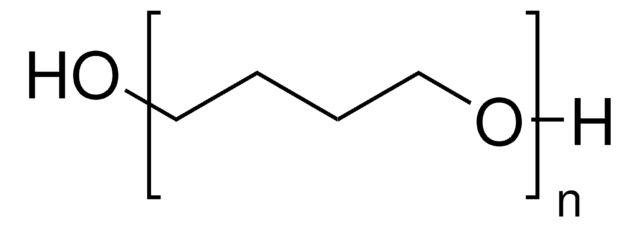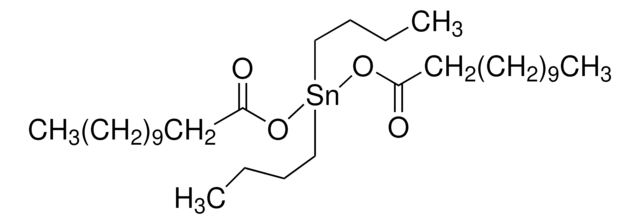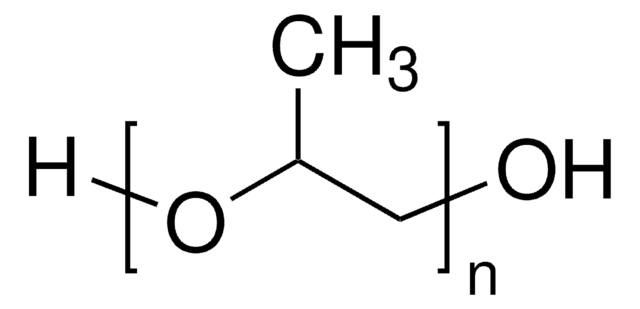Kluczowe dokumenty
345296
Poly(tetrahydrofuran)
average Mn ~1,000
Synonim(y):
α-Hydro-ω-hydroxypoly(oxy-1,4-butanediyl), Poly(1,4-butanediol), polyTHF
About This Item
Polecane produkty
ciśnienie pary
<0.01 mmHg ( 25 °C)
<1 mmHg ( 20 °C)
Poziom jakości
masa cząsteczkowa
average Mn ~1,000
zawiera
0.05-0.07% BHT as stabilizer
mp
25-33 °C
gęstość
0.974 g/mL at 25 °C
ciąg SMILES
OCCCCO
InChI
1S/C8H18O2/c1-3-5-6-10-8(4-2)7-9/h8-9H,3-7H2,1-2H3/t8-/m0/s1
Klucz InChI
BJZYYSAMLOBSDY-QMMMGPOBSA-N
Szukasz podobnych produktów? Odwiedź Przewodnik dotyczący porównywania produktów
Powiązane kategorie
Zastosowanie
- Thermally reversible urethane -epoxy networks.
- Poly(hexamethylene 2,6-naphthalate)-block-poly(tetrahydrofuran) (PHN-b-N-pTHF) copolymers with shape memory effect via melt polycondensation.
- Poly(3,4-ethylenedioxythiophene):poly(tetrahydrofuran) composite for the fabrication of memory organic electrochemical transistors.
Cechy i korzyści
- High flexibility
- Hydrolytic stability
- Excellent abrasion resistance
Kod klasy składowania
11 - Combustible Solids
Klasa zagrożenia wodnego (WGK)
WGK 3
Temperatura zapłonu (°F)
>325.4 °F - Tag open cup
Temperatura zapłonu (°C)
> 163 °C - Tag open cup
Środki ochrony indywidualnej
dust mask type N95 (US), Eyeshields, Gloves
Wybierz jedną z najnowszych wersji:
Masz już ten produkt?
Dokumenty związane z niedawno zakupionymi produktami zostały zamieszczone w Bibliotece dokumentów.
Global Trade Item Number
| SKU | GTIN |
|---|---|
| 345296-25ML | 4061837797323 |
| 345296-18L | 4061837797316 |
| 345296-1L | 4061826760536 |
| 345296-3L | 4061826760543 |
Nasz zespół naukowców ma doświadczenie we wszystkich obszarach badań, w tym w naukach przyrodniczych, materiałoznawstwie, syntezie chemicznej, chromatografii, analityce i wielu innych dziedzinach.
Skontaktuj się z zespołem ds. pomocy technicznej







